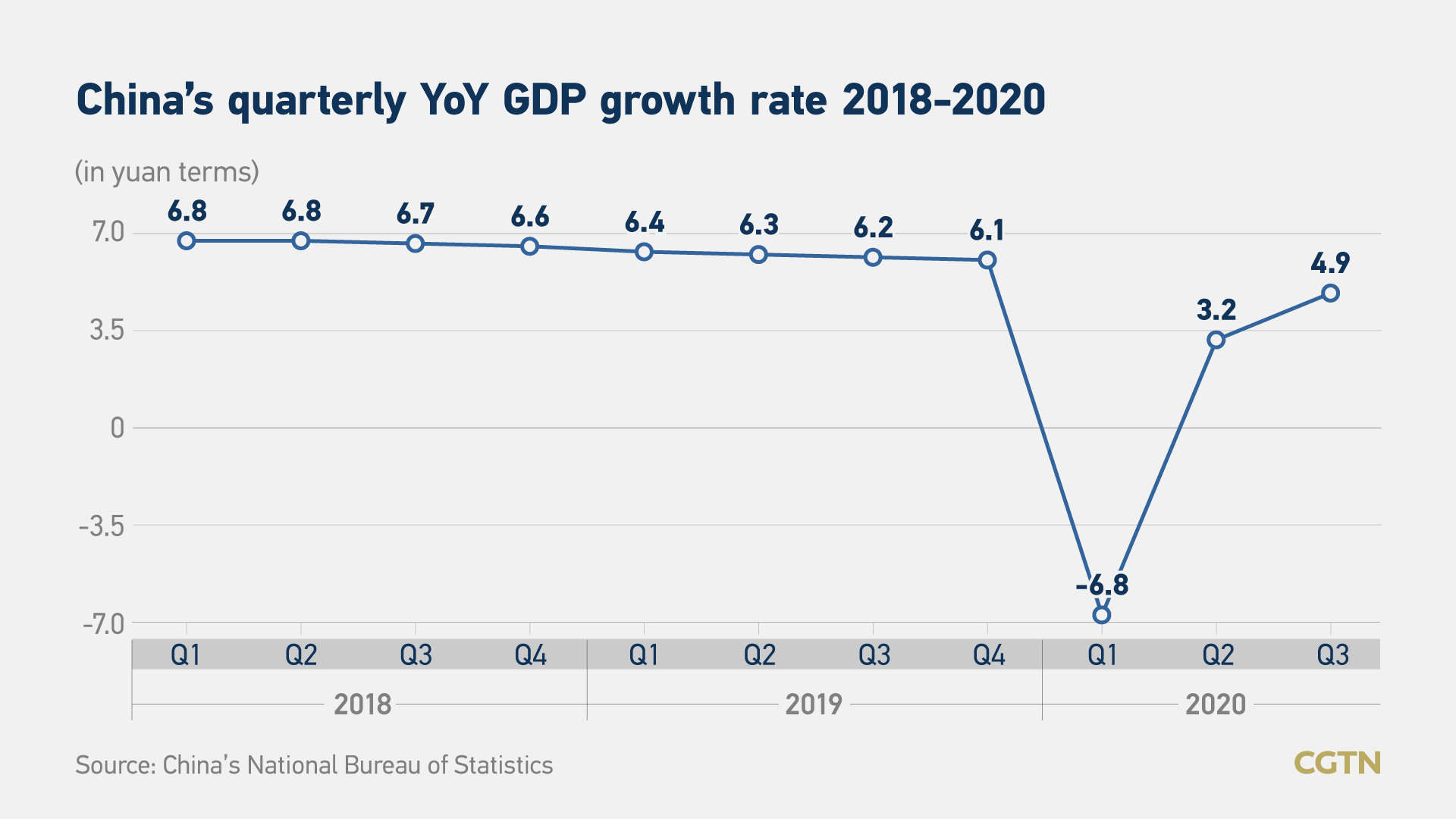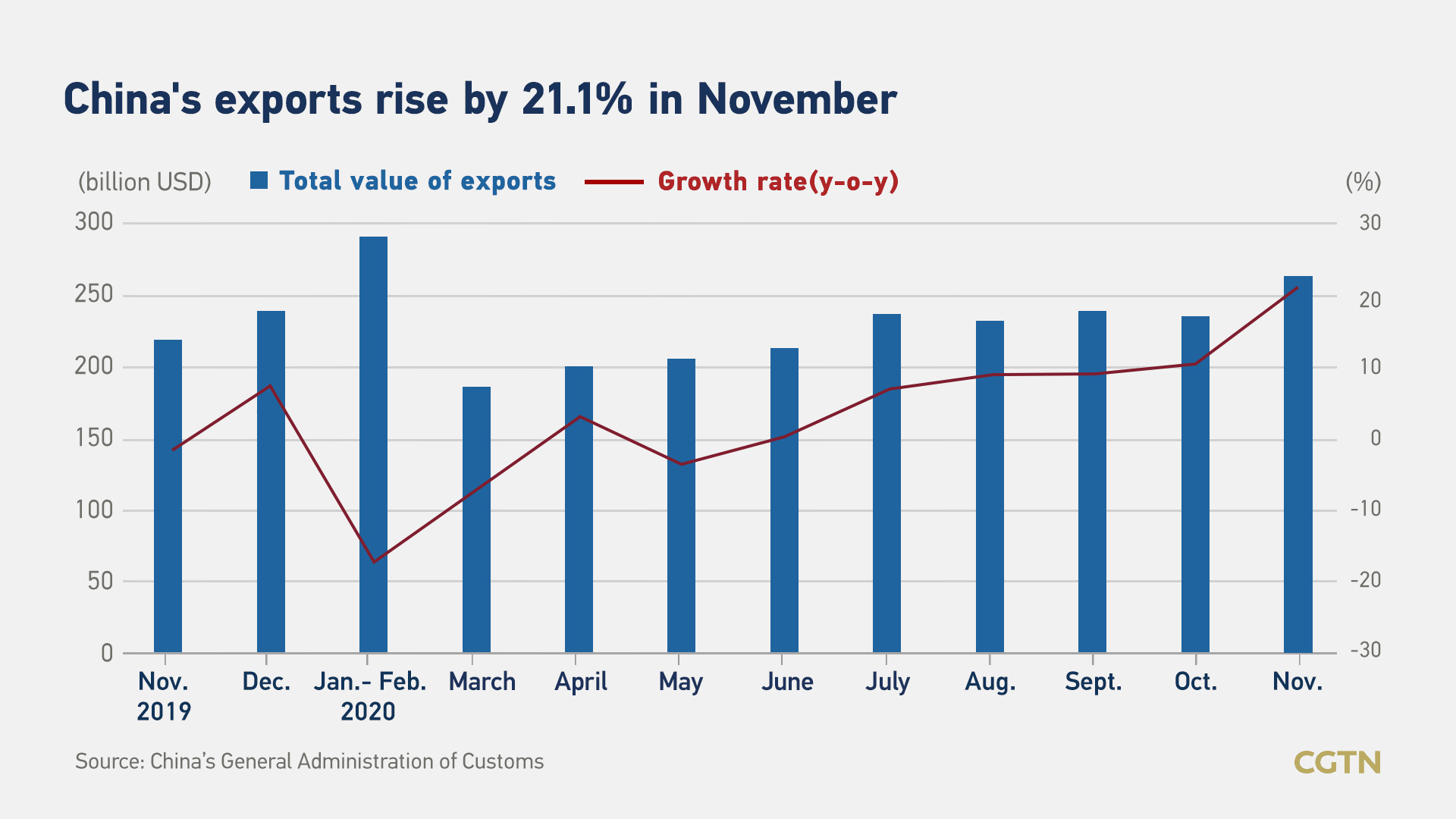China's economy wowed the world in both bad and good ways in 2020 - bad as the country experienced the first economic contraction of 6.8 percent since 1992 in the first three months this year, and good as the country quickly recovered and registered first and the fastest growth in G20 nations.
After the steep slump in the first quarter, China's GDP rebounded to 3.2 percent and 4.9 percent, bringing growth for the first three quarters of the year to 0.7 percent year on year, according to the National Bureau of Statistics. The International Monetary Fund (IMF) forecasted China's economic growth at 1.8 percent in 2020, while projected the global economy to shrink 4.4 percent, the worst since the Great Depression.

The coronavirus pandemic hit China at the beginning of this year. The country reacted timely and introduced nationwide lockdown measures to contain the virus transmission. Offices and factories were shut down, travels were restricted and almost the entire population was advised to stay at home while masks were made compulsory in public places. After paying the hard prices for almost three months, Chinese society regained some normality. Trade, and consumption quickly resumed. The government issued fiscal and monetary measures to boost recovery. What's more important, the pre-existing high rate of digitalization safeguarded a smooth economic growth in China.
After taking a pounding from December last year to February 2020, China's trade activities started to climb back. Though, with occasional fluctuations, the overall trajectory has been upwards. Data from the World Trade Organization in October shows that China's foreign trade accounted for 12.6 percent in global trade, up one percent from the same period of last year. Both exports and imports hit record high shares in global trade.
J.P. Morgan Chief Economist Zhu Haibing told CGTN that China benefited from its "first in first out" from the pandemic. "China is one of the few countries where production side first recovered, much earlier than the rest of the world," said Zhu.
China's exports benefited from medical supplies and "stay-at-home" items that are in strong demand from countries affected by the pandemic. The two categories contributed 2.2 percent and 1.2 percent respectively to export growth in the first three quarters.

China's consumption also quickly recovered as businesses and people's lives largely went back to normal since the beginning of March this year. The strong consumption is also supported by Chinese people's strong saving habits and the wide-coverage of smartphones and e-commerce.
Car sales and consumer goods consumptions are both up, and the catering industry also saw its first positive growth in October. Domestic airline ticket sales and domestic tourism are also up.
China's online economy enjoyed a strong boost from the pandemic, as more people are buying daily consumer goods from e-commerce platforms to avoid going to public places, and consumers are buying more, since work-from-home means they need more consumer products.
Read more:
Double 11 Shopping Festival: $56 billion sales boom demonstrates China's sustainable consumption power
Domestic tourism also soared due to the restrictions on overseas travel. Duty-free sales within China also skyrocketed as a result.
Instead of handing out cash to the public to help them weather through the tough times, the Chinese government adopted measures that are more suitable to the country's conditions. The government launched a mixture of fiscal and monetary policies, including tax reduction and debt relief for companies, especially for Small-and medium-sized enterprises (SMEs).
The country also issued 3.75 trillion yuan ($527 billion) of special local government bonds for investment, mainly in the construction of infrastructure, to boost development and employment.
Facing a more uncertain global geopolitical environment, China is thinking ahead and launched "dual circulation" development strategy to balance the economy to let domestic demand play a bigger part in driving economic growth. However, China also emphasized that this strategy does not mean that the country will isolate itself from the rest of the world, instead the country is on the course of further opening-up, trying to attract more foreign investments and signing more trade deals. This is to ensure that the two circulations boost each other.
Read more: Guide to China's dual circulation economy

